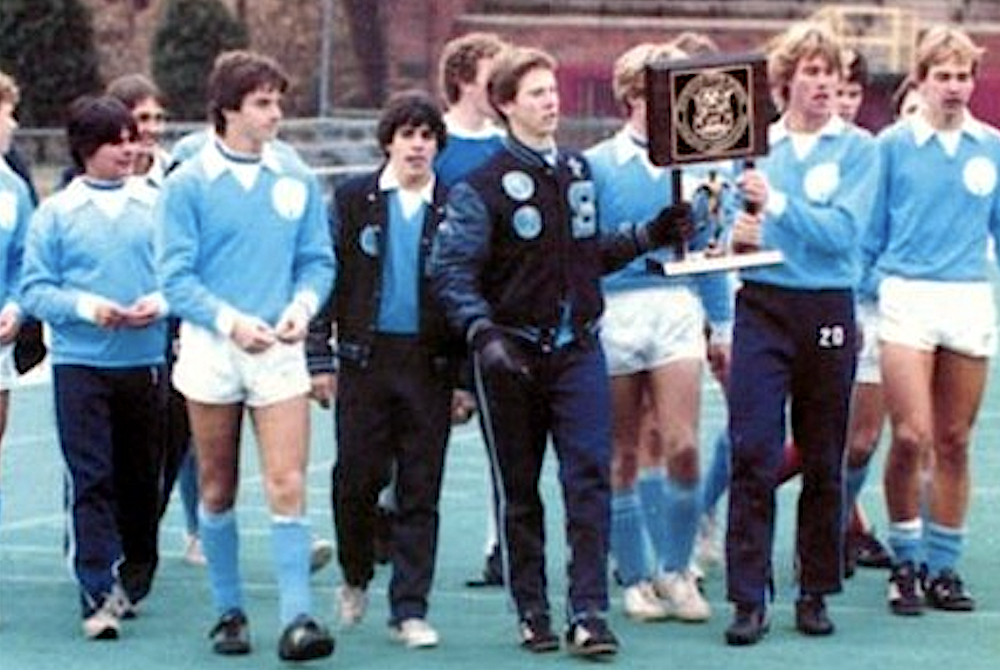
'World's Game' Makes Home in Metro Detroit, Then Grows Statewide
By
Ron Pesch
MHSAA historian
November 3, 2021
In the fall of 1982, Livonia Stevenson assistant coach Ralph Aulicino suggested to Detroit Free Press stringer Jon Pepper that “somewhere along the Livonia city limits” there should be a sign erected that proclaimed the Detroit suburb as “the state capital of soccer.”
Stevenson’s Spartans had just beaten crosstown rival Livonia Churchill 4-1 in what some called “The Battle of Livonia.” The contest, played at Flint’s Atwood Stadium, was the first-ever Class A Boys Soccer Final sponsored by the Michigan High School Athletic Association.
Guided by head coach Pious (Pete) Scerri, a former first division player in England, Stevenson finished the year with a flawless 22-0 record. Gary Mexicotte scored twice for the Spartans in the title game, finishing with 48 goals on the season. In December, he was named prep All-American.
Aulicino’s statement might have been considered a bit arrogant within the soccer community. Still, there was little question that the surrounding burgs of the Motor City were the hub of the prep soccer world in Michigan at the time.
The Hamtramck Cosmos, coached by John Geremich, finished with the MHSAA’s Class B-C honor while Grosse Pointe Woods University Liggett, coached by David Backhurst, earned the Class D trophy in the autumn tournament. The Knights finished the year with an 18-1-1 mark, and would repeat as champs in 1983, but this time in Class B-C.
Dominant
Looking back today, Aulicino’s words were prognostic.
In the spring of 1983, Stevenson’s girls, coached by Norene Divens, grabbed the MHSAA’s first Open Class championship – meaning schools of all sizes competed in one division – with an 8-0 win over Saginaw Eisenhower.
Then Scerri’s boys would appear in an incredible six of the first seven Class A title games, winning four. Divens’ girls appeared in the first three Open championships, winning two while finishing runners-up to Northville in a 5-4 overtime battle in 1984. Churchill’s girls won the 1986 Open title. When the MHSAA expanded the girls postseason to two divisions, Churchill finished runner-up in Class A to Plymouth Salem – yet another metro Detroit high school – in the springs of both 1987 and 1988.
Allen Park Inter-City Baptist won three straight boys Class D titles from 1983 to 1985.
Coach Scerri did emphasize the importance of the moment to the development and changing landscape of sports in Michigan following that first championship:
“Let me put it this way. Usually, we get the rejects from the football team. This year, the football team took three rejects from us. It’s going the other way around now.”
Culinary Delights, Old World Music, and Soccer
The chance to play for an MHSAA Finals title must have been a joyous occasion in the vibrant community of Hamtramck. Geremich, whose team won that first Class B-C championship, explained the city’s connection to the sport in 1980.
 “We’ve got a lot of Yugoslavian and Albanian kids who were brought up on soccer,” he told the Free Press. “Their parents never played football and baseball, so they look to soccer.”
“We’ve got a lot of Yugoslavian and Albanian kids who were brought up on soccer,” he told the Free Press. “Their parents never played football and baseball, so they look to soccer.”
Geremich himself was one of those kids. He came to America in 1958 from Serbia and attended Hamtramck. Soccer, however, wasn’t an option at Hamtramck during his days in high school.
Without that outlet, Geremich along with classmates Francisco ‘Pancho’ Castillo from Colombia and Jerry Podesek from Poland, all became standouts in the school’s outstanding tennis program instead. The Cosmos won 11 consecutive MHSAA Class A team tennis state titles from 1949 to 1959, and 18 of 21 between 1949 and 1969. The trio would later attend and play tennis at Southern Illinois University together.
“All three readily admit that soccer and not tennis are the national pastimes in their homelands,” stated the Grand Rapids Press in 1958.
Hamtramck’s top player in 1982 was Kanto Lulaj, who had been playing soccer since the third grade. Only a few years earlier, his family had come to Hamtramck from Albania. A 150-pound junior center-forward, he finished that championship season as Michigan’s most prolific scorer, notching 56 goals. A four-year varsity starter, he was named All-American in 1983, then played collegiately at the University of Connecticut.
Pockets
Delving into the game’s earliest history at the prep level in Michigan certainly helps explain the area’s dominance. Wildly popular among the immigrant population employed in plants across southeastern Michigan, men’s factory and recreational soccer leagues flourished in and around Detroit for years.
The Holley Carburetor F.C. team, sponsored by Detroit’s Holley Brothers Company, gained coast-to-coast attention as it battled to the National Challenge Cup championship game (today known as the Lamar Hunt US Open Cup), played before 10,000 fans at University of Detroit stadium in May 1927. A Detroit professional circuit even came into existence that same year. The short-lived Detroit Cougars, according to the Free Press, were the first incorporated soccer club in Michigan.
“School soccer enjoyed a successful season,” said the Free Press in 1928, “especially in the elementary and intermediate grades, in which more than 17,000 boys participated in the schedule formulated by the health education department of the Detroit public schools.”
Ultimately, the increasing popularity of American football among boys (and spectators) overwhelmed soccer within public school districts, and soccer never became much more than an activity played outside school, or perhaps sometimes during gym class.
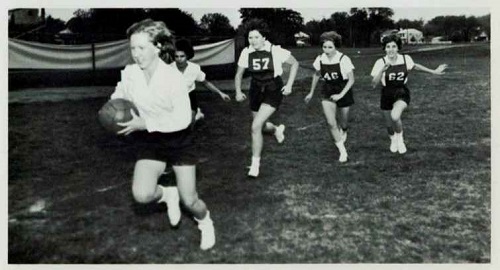 Soccer, or at least a form of the game, did appear as an intramural athletic activity in girls gym classes across the state dating back into the 1920s. Occasionally, especially in small towns, contests were played between schools from neighboring districts. For example, Buchanan’s senior girls defeated the sophomore girls from their old rival Niles, 2-0, in 1928.
Soccer, or at least a form of the game, did appear as an intramural athletic activity in girls gym classes across the state dating back into the 1920s. Occasionally, especially in small towns, contests were played between schools from neighboring districts. For example, Buchanan’s senior girls defeated the sophomore girls from their old rival Niles, 2-0, in 1928.
As state and national debate grew concerning the capacity and value of athletic activity and competition amongst girls, the sport was often modified within districts. At Ludington, speedball replaced soccer in 1948-49. At Birmingham Seaholm in 1962, girls participated in speed-o-way, a game similar to soccer that allowed use of the hands.
A Spark
Prep soccer programs found a spark among the boys at select schools in the suburbs of Detroit during the late 1950s and early 60s.
“(Initially) the only people that were playing anything approaching league soccer were the private schools,” recalled John Sala, a former coach at Birmingham Groves.
These programs were started as club sports, representing a school, but generally run outside the finances, guidance, and official sponsorship of a school’s athletic department. Opponents came where they could be found.
School yearbooks from the past help tell the tale.
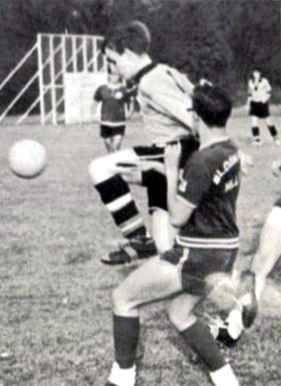 The sport was played at Bloomfield Hills Cranbrook in the 1930s, 1940s, and 1950s with games played against other private schools in Canada, Ohio, Illinois, western New York state, and Pennsylvania. Michigan schools first began appearing on the schedule in the 1960s.
The sport was played at Bloomfield Hills Cranbrook in the 1930s, 1940s, and 1950s with games played against other private schools in Canada, Ohio, Illinois, western New York state, and Pennsylvania. Michigan schools first began appearing on the schedule in the 1960s.
The team at Grosse Pointe University School (GPUS), according to its 1964 annual, “was founded five years ago by Mr. Preston, who returned this year to coach it.” The season was comprised of only six games, played against three opponents – Cranbrook, Bloomfield Hills and a season-ending game with “Preston’s Ringers.”
“With soccer only in its second year as a Varsity sport … the 1965 team showed a promise of successful seasons to come,” read the Bloomfield Hills High School yearbook. The boys finished the year with a 5-3-1 record. “Since soccer has yet to become a league sport,” the Barons faced squads from Cranbrook, GPUS, and Oakland University, as well as teams from Lowe Tech and Sarnia, both from Ontario, Canada.
Soccer became a varsity sport at Detroit Country Day School in 1965. That team finished with a 3-2-3 mark, playing contests with GPUS, Maumee, Ohio, and a newly-formed club team from Groves:
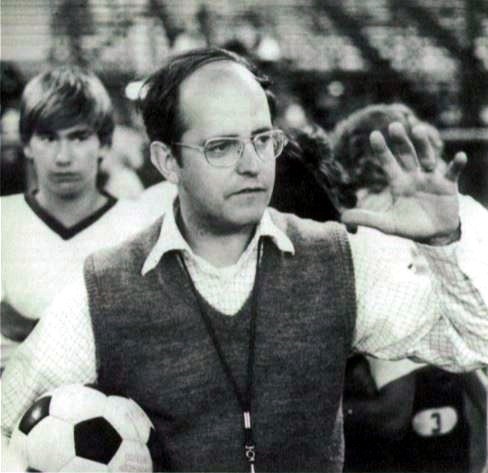 “After a late start in practice because they lacked a coach and equipment, Groves’ first soccer team introduced the rugged game to Birmingham varsity sports. Mr. John Sala took over coaching duties and helped the boys make the transition from last year’s club status to a varsity team with a full season schedule. The arrival of goals and other equipment and the donation of uniforms by Mr. Harrison Tracy boosted team morale and their play improved noticeably.”
“After a late start in practice because they lacked a coach and equipment, Groves’ first soccer team introduced the rugged game to Birmingham varsity sports. Mr. John Sala took over coaching duties and helped the boys make the transition from last year’s club status to a varsity team with a full season schedule. The arrival of goals and other equipment and the donation of uniforms by Mr. Harrison Tracy boosted team morale and their play improved noticeably.”
“When I was at Groves and starting out coaching (in 1966), I knew absolutely nothing other than having watched it,” recalled Sala, laughing at the memory. “They had a club team run by another staff member … and he left. Basically, they called me down to the office … I thought I was going to get reprimanded. (Instead) she says, ‘We have to have a coach by 4:00 today.’ I said, ‘How much does it pay?’ She said ‘$300.’ It sounds like a lot of money to me. So, I learned by doing.”
Sponsorship of soccer soon spread to other public schools in the immediate area, with teams appearing at Bloomfield Hills schools Andover and Lahser, the Livonia schools, Birmingham Seaholm, and Ferndale.
West Michigan
On the other side of the state, the soccer seed was taking root in the Greater Grand Rapids area.
“Central Christian, champion of the Christian High School Soccer League, completed its season Saturday morning at Calvin College’s Knollcrest Field by defeating Holland Christian, 3-1,” stated the Grand Rapids Press in October 1966. The four-team league also included Hudsonville Unity Christian and Grand Rapids Calvin Christian.
A year later, Kalamazoo Christian was added to the league, then Muskegon Western Michigan Christian (WMC). Casey Ver Haar, an honorable mention All-American goalie in soccer at Calvin College, coached Central Christian. Dave VerMerris, a former track star at Central Christian, then at Calvin College, took the job at WMC as coach at age 22. He had first given soccer a try as a freshman in college.
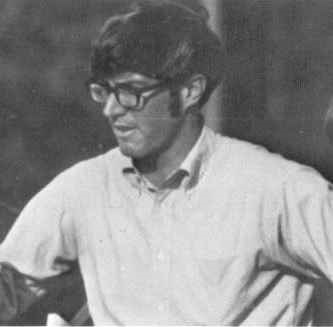 “Calvin that year had graduated quite a few of their soccer players,” recalled VerMerris, explaining how that began. “(Several) of their soccer players were immigrants – Dutch immigrants. They were hurting for bodies …”
“Calvin that year had graduated quite a few of their soccer players,” recalled VerMerris, explaining how that began. “(Several) of their soccer players were immigrants – Dutch immigrants. They were hurting for bodies …”
Marv Zuidema, the soccer coach, approached VerMerris sometime in August of 1964 and suggested he give the sport a try.
“I had some speed back in those days, and speed can take care of a lot of things if you don’t have the skill,” said VerMerris, chuckling. “His dream was I would outrun their defense and put the ball in the net. That never happened.”
Sport of the Future
Christian League officials were pleased with the level of competition and attendance at games. Between 100 and 150 spectators were showing up for contests.
“While (the) majority of West Michigan schools compete in nine major sports now,” noted longtime Press sportswriter Joe Vanderhoff in 1968, “it would be a good idea for some of the officials (at other schools) to look into the game of soccer. It’s been the No. 1 sport in Europe for years.”
According to MHSAA surveys, only 12 schools sponsored boys varsity soccer teams during the 1969-70 school year, with somewhere around 300 participants. By the 1975-76 school year, the numbers had grown to 35 schools and 1,085 participants. (Another dozen or so schools had club teams).
Without the numbers needed to meet the threshold for tournament sponsorship set by the MHSAA, the Michigan High School Soccer Coaches Association chose to host a 16-team playoff invitational beginning in the fall of 1975 to name a state champion. Groves, which had played in the 10-team North Woodward Conference, emerged from the knockout brackets to win that first title, defeating Hudsonville Unity Christian, 6-1. According to Free Press coverage at the time, more than 500 attended the championship game.
Undeniably, the sport was exploding in popularity at the participation level with American Youth Soccer Organization (AYSO)-affiliated clubs across the state. A Free Press article had noted that “a soccer team can be outfitted for about one-tenth the cost of a hockey player or one-fifth the cost of a football candidate.”
Still, it would take time. Invitational title tourneys, initially sponsored by the Coaches Association, were continued for six more years. The 1977 open-class single-elimination tournament featured 32 teams, with the state broken into eight regions.
“After a few years, they split it into an ‘A-B’ and ‘C-D’ (classification), recalled VerMerris, who remained at WMC for 30 years. “In 1979, we won the whole shooting match. In 1980, we won ‘C-D’.”
Soccer in Mid and Northern Michigan
Too small to sponsor 11-player football teams, Leland, Northport, Buckley, Lake Leelanau St. Mary, and The Leelanau School in Glen Arbor added soccer to the mix of varsity sports played within the Cherryland Conference in the fall of 1970. Leland’s Comets won the league’s first title that season.
Soccer first hit the Lansing area as a varsity sport beginning in the late 1970s.
“Right now East Lansing High is the only major area school which has included soccer in its interscholastic program,” Lansing Journal correspondent Keith Gave wrote in 1978. “In only its second year, the program brought out 70 students, enough for a varsity team and two junior varsity teams.
“Filling a schedule was a slight problem because few area schools play the game. Holt St. Matthew has had a program for about four years and Lansing Capitol City Christian has one. In fact, up until a few years ago the only soccer to be found at the interscholastic level was in the smaller, parochial schools which didn’t have football programs.
“But,” said East Lansing coach Nick Archer, “it’s just a matter of time before it’ll be all over. The game is just exploding at the youth level.”
Archer, who would coach the Trojans for 41 years, had played soccer at Michigan State and was part of the 1967 and 1968 national champion squads with the Spartans. He had scheduled games with Roeper, Cranbrook, first-year varsity teams from Saginaw Eisenhower and Flint Carman, and with Ann Arbor schools Pioneer and Huron, both in their second year of varsity competition.

Critical Mass Achieved
“In 1974-75, the cheerleaders came to me and said, ‘We want to play soccer,’” recalled Sala. “I had about 85 girls show up so I split them up into four teams – a freshman, sophomore, junior and senior team – an informal thing for the first few years. With Title IX, we already had a club team going – a reliable program.”
Soccer was made a girls varsity sport at Groves during the 1977-78 school year. Girls teams were also active at Livonia and Farmington schools, as well as at Andover, Seaholm, Lahser, and Roeper.
Numbers grew across the state to 71 boys teams and eight girls teams during the 1979-80 school year, then to 84 boys and 36 girls squads a year later.
In December 1980, a committee of superintendents, principals and athletic directors recommended to the MHSAA Representative Council that it sponsor a state soccer tournament for boys and girls beginning with the 1982-83 school year. The Representative Council concurred with the suggestion.
Troy Athens, coached by Tim Storch, one of Sala’s former players at Birmingham Groves, won the last of the A-B invitational soccer championships, played in November 1981. Four of his boys teams and four of his girls teams would later go on to win MHSAA soccer titles. Detroit Country Day won the final C-D Division invitational crown in the spring of 1982.
“More than 45,000 boys and girls in the Detroit metropolitan area – the majority of them in Oakland County – now play in youth soccer programs sponsored by communities, clubs and businesses,” stated Johnette Howard in a Free Press article on the country’s “latest boom sport,” published in September 1982.
“The skill levels of the players are unbelievably improved,” said Bloomfield Hills Lahser coach Chet Schultz. “There is not a boy on my varsity team that hasn’t played at least five or six years.”
Not all coaches were in favor of the move to MHSAA sponsorship.
“Some coaches didn’t like having the MHSAA dictate the number of games to be played, when the season could start, rules for playing Canadian teams, coaching accountability, etc.,” stated VerMerris, who played witness to, then researched and captured detail on those early days of play in West Michigan and across the state.
“The MHSSCA was very instrumental in helping make this a smooth transition and the MHSAA was very willing to work with us. Not surprisingly, not everyone was happy but this legitimized the sport and put it on a par with all the other MHSAA sponsored sports.”
 Ron Pesch has taken an active role in researching the history of MHSAA events since 1985 and began writing for MHSAA Finals programs in 1986, adding additional features and "flashbacks" in 1992. He inherited the title of MHSAA historian from the late Dick Kishpaugh following the 1993-94 school year, and resides in Muskegon. Contact him at [email protected] with ideas for historical articles.
Ron Pesch has taken an active role in researching the history of MHSAA events since 1985 and began writing for MHSAA Finals programs in 1986, adding additional features and "flashbacks" in 1992. He inherited the title of MHSAA historian from the late Dick Kishpaugh following the 1993-94 school year, and resides in Muskegon. Contact him at [email protected] with ideas for historical articles.
PHOTOS (Top) Livonia Stevenson carries its trophy off the field at Atwood Stadium. (2) Hamtramck was the first Class B-C champion. (3) Birmingham Seaholm students play speed-o-way during the 1962-63 school year. (4) A Bloomfield Hills Cranbrook player possesses the ball during the 1964-65 school year. (5) Birmingham Groves coach John Sala speaks to his team during the 1975 season. (6) Dave VerMerris became the Western Michigan Christian coach at age 22 and led the program for 30 years. (7) Stevenson’s girls won the first MHSAA Open Class championship in 1983. (Photos collected by Ron Pesch.)
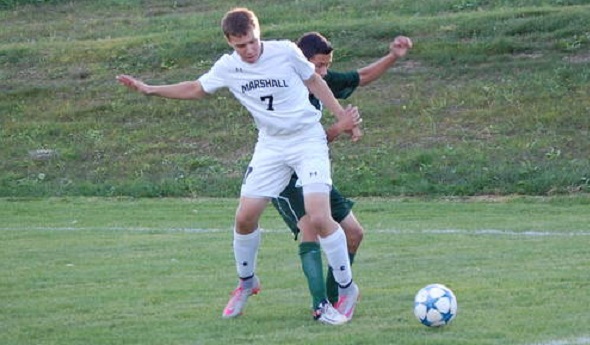
Marshall Standout Nears Finish of Fight
By
Pam Shebest
Special for MHSAA.com
November 17, 2015
MARSHALL — February 1 is a red-letter day for Andrew Shippell.
 However, the Marshall senior doesn’t have a huge celebration planned — not yet, anyway.
However, the Marshall senior doesn’t have a huge celebration planned — not yet, anyway.
As a freshman in the fall of 2012, Shippell and his Redhawks teammates were pumped as they headed into the Division 2 Boys Soccer Districts.
But Shippell had been dealing with pain in his shoulder. It went away, but when it returned in his other shoulder a week later, his mother, Theresa, took him to the doctor to have it checked.
When the doctors got the results of his blood counts, they wanted the diagnosis confirmed, so the Shippells ended up at Bronson Methodist Hospital in Kalamazoo on Oct. 19, 2012.
“They knew before we went over that his blood counts looked like he had leukemia, but they wanted that confirmed by the oncologist,” Theresa Shippell said. “We knew by midnight that we were in for a long haul.”
Thankfully, the journey is nearly complete.
February 1, 2016, is the day Andrew is scheduled to end the maintenance phase of his chemotherapy and will be chemo and pill-free for the first time in three years.
‘Reasons to fight’
His diagnosis back in 2012 was acute lymphoblastic leukemia, and all of a sudden the soccer team was without its leading scorer.
“I just didn’t think it was possible,” his dad, Dale Shippell, said. “That kid, as strong as he was, being taken out like this was ridiculous.
“His eighth grade year, just three months prior to that, he was breaking school records in track and field. Seeing him lying in that bed after having his port put in was just devastating.”
That season, Marshall won the District title but lost in the Regional Semifinals.
“I really believe we won districts for Andrew,” said senior Alec Kraushaar, Andrew’s longtime friend and teammate. “We came together.
“We weren’t the best skilled team, but we fought and we had a reason to fight. We wanted to let Andrew know we had his back in this.”
Instead of heading back to Marshall following the 4-3 double overtime District win at Coldwater, the team went straight to Bronson Methodist.
“Alec and the whole team came up to see him after they won districts,” Dale Shippell said. “He literally was just out of recovery when they walked into the room with the trophy.”
Shippell was back on the soccer and baseball fields by his sophomore year and ended his high school soccer career this fall the way it started: with a District title.
The Redhawks lost 2-0 to Plainwell earlier this month in the Regional Semifinals.
“I think he played more minutes than he did all season in our very last game against Plainwell,” Marshall’s first-year coach Hans Morgan said. “I told him he was the best player on the field that day.
“I pushed him as long as I could push him because we needed him out there. His fitness was never less than anyone else’s. He’s a very, very talented player.”
Even though he never played 80 minutes straight, Shippell led the team in scoring this season. He and Matt Terry scored nine goals each, and Shippell added a team-high 14 assists “so he blew everybody out of the water in terms of total points,” Morgan said.
'A scary word'
Looking back to their freshman year, Kraushaar remembers the impact Shippell’s diagnosis had on the team when it first heard the news.
“I was at practice,” he said. “Coach Tony (Tartaglia) got a call and had us huddle up. He goes, ‘I have some news. Andrew has been diagnosed with leukemia.’
 “My reaction at first was ‘What’s leukemia?’ Someone said cancer. I immediately thought the worst. I broke down. I remember going to the bench and just sitting there and crying. What else could I do? Districts were that week.”
“My reaction at first was ‘What’s leukemia?’ Someone said cancer. I immediately thought the worst. I broke down. I remember going to the bench and just sitting there and crying. What else could I do? Districts were that week.”
Said Theresa Shippell: “I have two boys and that was probably the worst news I’ve received my whole life. You think of the cancer. It’s not a pretty word. It’s a scary word.”
Andrew Shippell said his first thought was whether he would survive, but the doctors quickly assured him that the leukemia was found early enough and was treatable.
His parents also were assured that his twin brother, Ben, should not be affected.
“We asked the oncologist right away and he said no because fraternal twins don’t tend to have the same diagnosis,” their mother said.
During Andrew’s freshman year, the teen kept up with his school work via the Internet so “I’d be able to graduate on time with my class,” he said. “My teammates supported me through everything and made sure I’m pushing as far as I can go. They know my limit and, if not, I’ll let them know.
“Some teammates would cook food and bring it by the hospital and visit me at the hospital and make sure I was entertained instead of just sitting in a hospital bed watching TV.”
That first year, “One of the teachers (girls cross country coach Steve Wissink) had hair down to his shoulders and he cut it to raise money.
Students also sold “Andrew Strong” bracelets.
Morgan said he did not know about Shippell’s leukemia when he took over the coaching job this year.
He had a meeting with Shippell and Kraushaar during the summer to talk about the team and its goals.
“In the middle of the conversation, Alec mentioned Andrew’s going through chemo and recovering from leukemia,” Morgan said. “My jaw must have hit the floor because I had zero idea whatsoever. It was surprising, to say the least. It’s shocking he’s done so well.
“I remember I tried to save face a little bit that day and talked about how good it was that I knew it now and how we might have to manage minutes, play him in short bursts or something like that.
“Other than a few e-mails that Andrew might be late to practice that day because of medical stuff or practicing with their shirts off because you could see where the port was, outside of those two things, I would have had no idea.”
Looking back, looking ahead
Since his freshman year, “He’s had about 15 spinals since he was diagnosed where they treat his brain with a chemo,” Theresa Shippell said. “He’s had shots in the leg.
“He’s had three- and four-day stints of chemo through his port for 24 hours at Bronson, then flush it until his counts were back to normal. Usually two to four days there. He’ll be on pills (between 3 and 27 pills a day depending on the day) until February.”
In February, the port comes out but he will be checked monthly the first year and periodically over the next five.
 “I’m looking forward to it,” his dad said. “I just want to see him as him again without the extras. This year, he was his freshman year all over again and it was great to see.”
“I’m looking forward to it,” his dad said. “I just want to see him as him again without the extras. This year, he was his freshman year all over again and it was great to see.”
The athlete could not play baseball his freshman year and was on the junior varsity team as a sophomore. This season will be his second on the varsity squad.
Playing second base and shortstop, Shippell “is in the heart of a really good class,” said baseball coach Trevor Kelley, who resigned this year to coach at Albion College. “Watching him practice and prepare, you can see he has tremendous ability.
“Because of his medical issues, he didn’t come back so easily. Once he got confidence, his playing time began to increase and he became a starter.”
The journey has been a learning lesson for many.
“I just wanted to get back to my normal life and not let it affect me,” Andrew Shippell said. “I learned that you definitely have to push through some obstacles in life and no matter what gets thrown your way, you have to keep going and look at the bright side.”
Said Kraushaar: “Now he seems like his own self. For (the soccer team) to finish the way we started was by far amazing. Both of us had great seasons.
“I learned that being a friend, being there for each other, the small things, they go a long way. You have to be there, have to let them know you care. That means a lot to people in more ways than you can realize.”
Kraushaar’s brother, Kurt, a junior on the soccer team, said he was only in eighth grade when he heard the diagnosis and did not know anything about leukemia.
“I knew cancer was a deadly disease,” he said. “You hear how people are fighting it but you don’t expect it to happen so close to home, to one of your friends.
“It was hard knowing what Andrew was going through. Just being there for someone, knowing they have it worse than you. You can’t look at your bad things because there’s someone who has it worse.”
Shippell has a suggestion to anyone else going through medical challenges: “Just make sure you let your family and friends give you all the support they can and don’t block anybody out.
“Keep involved in activities and don’t shut down and let your life stop just because you’re diagnosed with such a horrible illness.”
 Pam Shebest served as a sportswriter at the Kalamazoo Gazette from 1985-2009 after 11 years part-time with the Gazette while teaching French and English at White Pigeon High School. She continues to freelance for MLive.com covering mainly Kalamazoo Wings hockey and can be reached at [email protected] with story ideas for Calhoun, Kalamazoo and Van Buren counties.
Pam Shebest served as a sportswriter at the Kalamazoo Gazette from 1985-2009 after 11 years part-time with the Gazette while teaching French and English at White Pigeon High School. She continues to freelance for MLive.com covering mainly Kalamazoo Wings hockey and can be reached at [email protected] with story ideas for Calhoun, Kalamazoo and Van Buren counties.
PHOTOS: (Top) Andrew Shippell (7) works to control the ball during one of Marshall's soccer games this season. (Middle) Clockwise, from top left: Andrew Shippell, Theresa Shippell, Alec Kraushaar, Dale Shippell. (Below) Andrew Shippell picks up a grounder; he'll play his second season on the varsity baseball team next spring. (Action photos courtesy of the Shippell family.)

